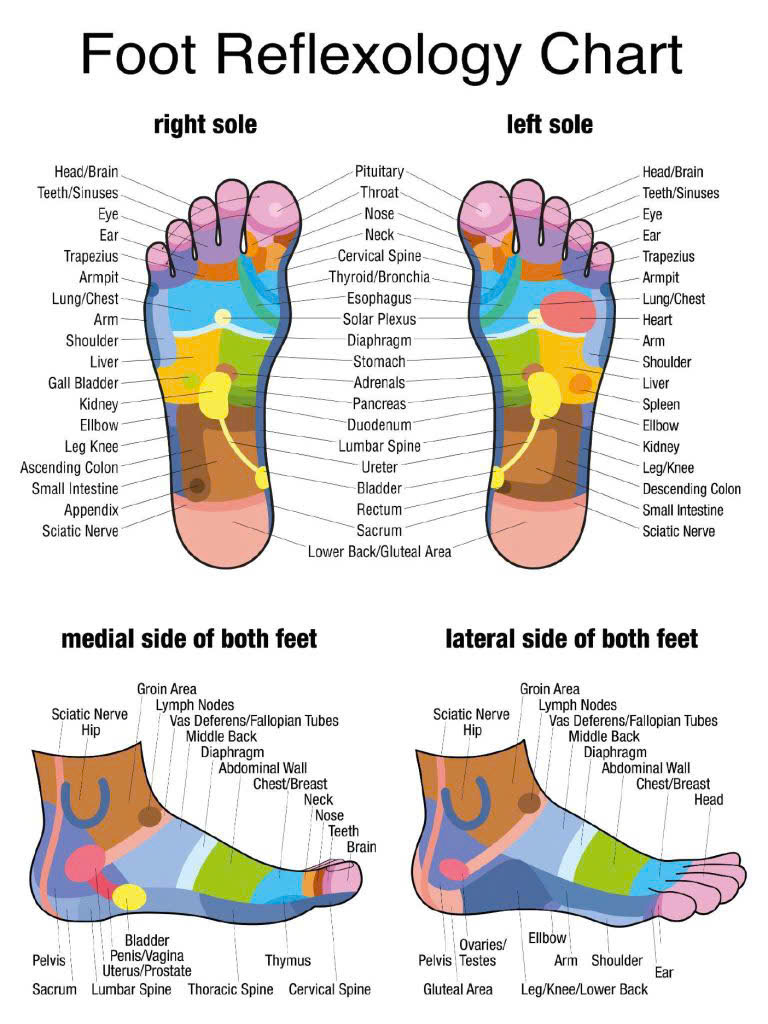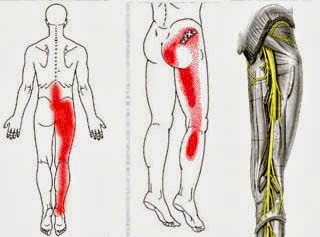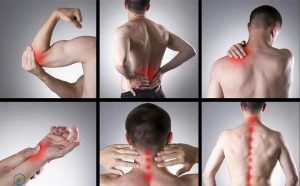7 Body Warning Signs You Shouldn’t Ignore – Get Massage
Maintaining good health requires paying close attention to what our bodies are telling us. Sometimes, subtle signs can indicate underlying issues that need prompt intervention. Regularly listening to these signals can make all the difference in preventing serious health complications. Visiting a professional for a massage can be an excellent way to assess and address certain body warning signs, as well as promote overall well-being. This article explores the crucial body warning signs that you should not ignore and how a massage might help in detecting or alleviating underlying problems.

Persistent Pain That Lingers or Worsens
Pain is often our body’s way of signaling that something might be off. While occasional, minor discomfort is normal, pain that persists or intensifies over time should not be ignored. Chronic pain may originate from various causes, including musculoskeletal issues, nerve problems, or internal organ conditions. Recognizing the characteristics of persistent pain is essential to seek timely medical advice and consider complementary treatments such as massage therapy. Regular massages can alleviate muscular tension and may help identify areas of pain that require further investigation.
Small, Recurrent Pains Could Mask Serious Conditions
Many individuals dismiss minor aches and frequently recurring pains as insignificant or part of aging, but these symptoms can sometimes be early indicators of more serious health concerns. For example, persistent lower back pain could point to degenerative disc disease or herniated discs, especially if it radiates along nerves or is accompanied by numbness or weakness.
In some cases, recurring pain in the chest or abdomen might signal underlying cardiovascular or gastrointestinal issues that warrant urgent medical attention. Ignoring these signals could lead to worsening conditions that become harder to treat. Understanding when such pain deviates from normal discomfort is vital; persistent pain that does not resolve or worsens with rest requires professional evaluation.
Massage therapy offers a non-invasive method for managing pain by relaxing tight muscles, reducing inflammation, and improving circulation. A skilled massage therapist can identify areas of heightened sensitivity, tension, or abnormal muscular responses, essentially aiding in early detection of problems. When combined with medical advice, massage can also promote pain relief and enhance healing.

Recognizing Pain Patterns and their Implications
Pain patterns—such as sharp, stabbing pain versus dull aches—can provide insight into their origins. Sharp, localized pain often points to acute injuries, like ligament sprains or fractures, whereas dull and widespread discomfort might be linked to chronic conditions such as osteoarthritis or fibromyalgia.
Analyzing the duration, frequency, and affected areas of pain can help determine urgency. For example, persistent pelvic or abdominal pain warrants immediate attention, as it might relate to internal mechanisms that need urgent diagnostics. Conversely, muscle soreness following exercise usually resolves within days and can benefit from massage therapy to aid recovery.
Massage can be particularly effective in identifying trigger points—tight knots within muscles—that contribute to pain syndromes. These trigger points may reproduce symptoms elsewhere in the body, indicating referral pain. Addressing such points through massage can provide relief and assist health professionals in understanding underlying issues.
Unexplained Fatigue and Low Energy Levels
Feeling tired is commonplace, but when fatigue becomes persistent and unrelieved by rest, it signals an underlying health problem. Chronic fatigue can be tied to sleep disorders, nutritional deficiencies, infections, or more serious conditions like thyroid dysfunction or depression. Recognizing when fatigue is abnormal is important for seeking appropriate diagnosis and treatment.
Causes of Unrelenting Fatigue
Persistent fatigue may stem from various factors, including poor sleep quality, stress, or unmanaged medical issues. For instance, anemia reduces the blood’s capacity to carry oxygen, leading to exhaustion. Hormonal imbalances, such as hypothyroidism, can also manifest as constant tiredness. Identifying these causes often requires detailed medical assessment, but lifestyle factors like inadequate hydration or physical inactivity can also contribute.
In some cases, fatigue is exacerbated by muscular tension and poor posture, which often result from daily sedentary habits. Muscles become tight and fatigued faster, impairing movement and energy levels. Here, massage therapy can be a vital intervention, not only relieving muscle tension but also stimulating circulation and promoting relaxation, ultimately increasing energy levels.

The Connection Between Musculoskeletal Health and Fatigue
Musculoskeletal issues frequently tie into feelings of fatigue. Tense, strained muscles can restrict blood flow and oxygen delivery, leading to tiredness and decreased stamina. Additionally, unresolved pain or discomfort can interfere with restful sleep, perpetuating fatigue in a vicious cycle.
By implementing regular massage sessions, individuals can alleviate muscle tension, enhance lymphatic drainage, and improve overall circulation. These benefits can help break the cycle of fatigue, making it easier to enjoy daily activities and improve mental clarity. Moreover, detecting areas of chronic tension or muscle imbalances that contribute to fatigue allows practitioners to target treatments more effectively.
In a broader context, persistent unexplained fatigue warrants a multidisciplinary approach. While massages can alleviate musculoskeletal contributors, underlying medical conditions must be ruled out or managed alongside such complementary therapies.
Changes in Skin and Mucous Membranes
The skin and mucous membranes serve as the body’s first defense against external threats. Changes in their appearance—such as rashes, discoloration, or dryness—can signal internal health problems, allergies, or infections. Paying attention to these warning signs can facilitate early diagnosis and treatment, therefore maintaining overall health.
Skin Discoloration, Rashes, and Their Meaning
Unexpected skin changes often indicate systemic issues. For instance, jaundice—yellowing skin—can point to liver dysfunction, while pale skin might suggest anemia. Rashes accompanied by swelling could be signs of allergic reactions or autoimmune conditions like lupus. Recognizing these signals expediently helps prevent complications.
Moreover, persistent dry or itchy skin may be linked to nutritional deficiencies, dehydration, or endocrine disorders. Chronic skin issues might also be manifestations of internal infections or chronic illnesses. Visiting a healthcare professional for diagnosis remains crucial, but certain treatments like massage can improve circulation and reduce inflammation, alleviating some dermatological discomforts.
Mucous Membrane Alerts and What They Indicate
Lip, mouth, or gum problems—such as sores, discoloration, or swelling—are often signs of nutritional deficiencies, infections, or immune responses. For example, oral thrush or ulcerations may indicate underlying immune suppression, while dry mouth can be a side effect of medications or dehydration.
Changes in mucous membranes can also highlight systemic conditions like diabetes, where dryness and infections occur more frequently. Recognizing these signs early can lead to more targeted evaluations. In conjunction with medical treatment, certain gentle therapies, including massage, can help improve circulation and support skin and mucous membrane health by enhancing cellular repair processes.


Addressing External Signs for Better Internal Health
External signs such as skin and mucous membrane changes are often reflections of internal health. Regular examination of these signs combined with professional medical assessments ensures comprehensive care. Early detection allows treatment strategies to be more effective and less invasive.
Massage, though often associated with relaxation, can play a role here as well. Through increased blood flow and lymphatic drainage, massage stimulates the immune system and helps resolve superficial inflammation contributing to skin complaints. This holistic approach underscores the importance of listening to our bodies and seeking prompt treatment when warning signs appear.
Conclusion
Recognizing and responding to body warning signs such as persistent pain, unexplained fatigue, and visible skin or mucous changes are pivotal to maintaining健康 and preventing severe complications. Integrating these observations with wellness practices like massage can significantly improve quality of life by alleviating symptoms, promoting circulation, and supporting healing processes. While some signs require immediate medical attention, others may benefit from regular therapeutic interventions, including massage, which not only soothes muscles but also acts as a diagnostic ally. Paying close attention to your body’s signals and seeking appropriate care ensures a healthier, longer life rooted in awareness and proactive health management.
Understanding Persistent Pain: Its Implications and Management
Persistent pain is not merely an inconvenience; it is a complex, multifaceted issue that can significantly affect an individual’s quality of life. Chronic pain can be defined as any pain that lasts for more than three months, and it may arise from a variety of conditions, including injury, inflammation, autoimmune disorders, and even psychological health issues. Understanding the implications of persistent pain is crucial for effective management and treatment.
The Psychological Impact of Chronic Pain
The experience of chronic pain influences not just the physical body but also mental and emotional well-being. Many individuals suffering from persistent pain report feelings of frustration, helplessness, and depression. This psychological burden arises from the constant battle against pain, often leading to social isolation and a decreased ability to perform daily activities.
Persistent pain frequently creates a cycle where emotional states exacerbate physical symptoms—a phenomenon known as the bio-psycho-social model of health. When someone feels pain, they may develop anxiety around movements or activities, fearing that they may worsen their condition. This fear can lead to avoidance behaviors, further reducing physical activity and potentially worsening both the pain and psychological state. Engaging in therapies, such as cognitive-behavioral therapy, can mitigate these psychological impacts by helping individuals adopt healthier coping strategies.
Additionally, it is essential to understand that the mental components of pain perception can vary widely from person to person. Factors including stress, support systems, and prior experiences with pain can shape how one experiences and responds to chronic pain. This understanding can aid health professionals in crafting more personalized treatment plans that emphasize the mind-body connection.
Physical Therapies for Pain Relief
Among various treatment approaches, physical therapies continue to play a pivotal role in managing persistent pain. Massage therapy, in particular, has garnered attention for its efficacy in pain management. By reducing muscular tension, enhancing circulation, and releasing endorphins, massage can alleviate pain naturally without additional medication. Regular massage sessions can lead to a marked decrease in pain levels, improved mobility, and overall wellbeing.
Therapeutic exercises combined with hands-on techniques also serve as invaluable tools in pain management. Physiotherapy focuses on strengthening muscle groups, improving flexibility, and correcting posture—all essential components in tackling pain, especially in conditions caused by overuse or sedentary lifestyles. Integration of massage therapy into a physiotherapy regimen can enhance recovery processes, as the release of physical tension prepares the body for more vigorous rehabilitation efforts.
Another effective avenue is traction and mobilization techniques, which aim to address joint stiffness and misalignments. Addressing these elements often reveals improvements in pain levels and functional capacity. Understanding how to navigate the complexities of physical therapies allows individuals to regain control over their pain and, consequently, their quality of life.
A Holistic Approach to Managing Persistent Pain
Recognizing that persistent pain requires a comprehensive approach is crucial—not only relying solely on medications or isolated therapies. A holistic approach incorporates physical, emotional, and social aspects of pain management; it promotes overall well-being and long-term recovery.
Integrative treatments such as acupuncture, yoga, and mindfulness meditation complement conventional therapies like analgesics and physical therapy, creating a symbiotic relationship toward recovery. Many individuals find that combining multiple modalities provides greater relief than relying on a single approach, thereby improving their overall quality of life.
Regular reflective practices, such as journaling or engaging in creative outlets, can also enhance emotional resilience amid chronic pain. Individuals benefit from exploring their relationship with pain, cultivating self-compassion, and acknowledging their journey. This reflective practice reinforces an understanding that pain does not define their identity and allows for healing on multiple levels.
In summary, addressing persistent pain is a multifaceted endeavor that goes beyond mere symptom management. Engaging both physical and emotional strategies, including thorough assessments and therapies like massage, paves the way for comprehensive understanding and treatment. By fostering a holistic healing environment, individuals can chart a course towards recovery and improved overall health.
The Role of Lifestyle Changes in Health
Lifestyle choices play a pivotal role in maintaining overall health and well-being. From diet and exercise to stress management and social connections, the decisions we make daily can have profound implications on both short-term health and long-term wellness. Thus, being aware of the connections between lifestyle and health is instrumental for anyone aiming for a holistic and vibrant life.
Nutrition: Fueling the Body for Optimal Health
Diet significantly influences health, and a balanced, nutrient-dense diet can prevent numerous health issues while promoting recovery. Foods rich in vitamins, minerals, proteins, and healthy fats provide the building blocks necessary for bodily function, while poor dietary choices can lead to complications such as obesity, hypertension, and diabetes.
Emphasizing whole foods—fruits, vegetables, lean proteins, whole grains, and healthy fats—can help establish a strong foundation for optimal health. Moreover, hydrating adequately is vital, as our bodies require water not only for cellular health but also for digestion, detoxification, and temperature regulation. These nutritional fundamentals underpin physical health and contribute to improved energy levels, mood stability, and enhanced immune function.
For individuals struggling with specific conditions or recovery processes, consulting with a registered dietitian can be invaluable. Personalized nutrition plans tailored to individual needs can facilitate better health outcomes and empower individuals with the right dietary knowledge.
The Importance of Physical Activity
Incorporating regular physical activity into one’s lifestyle plays a critical role in maintaining health and enhancing quality of life. Physical exercise benefits almost every aspect of health, including cardiovascular fitness, muscle strength, and mental health. Regular movement has been linked to lower rates of chronic illnesses, as it helps manage weight, maintain healthy blood pressure, and improve cholesterol levels.
Moreover, exercise has been shown to have a positive impact on mental health, releasing endorphins that combat feelings of anxiety and depression. Finding enjoyable forms of physical activity—whether it’s walking, dancing, yoga, or team sports—ensures adherence to an exercise regimen and subsequently yields health benefits.
Integrating stretches and therapeutic exercises, particularly for individuals dealing with chronic pain or musculoskeletal issues, can also facilitate improved movement patterns and prevent re-injury. Engaging professional guidance through trainers or physical therapists can help tailor exercise programs that align with health goals and limitations.
Stress Management and its Benefits
Stress is an inevitable part of life; however, chronic stress can negatively impact health, leading to various physical and psychological issues. Developing effective stress management strategies is essential to maintaining balance and overall health. Techniques such as mindfulness meditation, yoga, and deep breathing exercises have been shown to mitigate stress effects significantly.
Furthermore, nurturing strong social connections is crucial in combating stress levels. Engaging with supportive friends and family can provide emotional sustenance and reinforce resilience in challenging situations. Seeking opportunities to connect and share experiences fosters feelings of community, belonging, and support.
Additionally, setting clear boundaries and taking time for self-care are vital practices in managing stress. Dedicating moments for leisure, hobbies, or relaxation can serve as an antidote to overly busy lives, allowing individuals to recharge and cultivate a healthier perspective toward stressors.
In conclusion, adopting a healthy lifestyle encompassing nutritious choices, physical activity, and stress management practices is integral to achieving overall well-being. Choices made each day contribute to both immediate and long-term health outcomes. Awareness and adherence to these essential components empower individuals to lead enriched lives with improved health and satisfaction.https://www.tiktok.com/@jobe.spa.massage?_t=ZS-8uucYtHwssr&_r=1
Conclusion
Recognizing the interconnectedness of chronic pain, lifestyle factors, and overall health is essential in addressing personal well-being. By understanding how symptoms signify deeper issues, embracing regular therapies like massage, and committing to healthy lifestyle changes, individuals can enhance their quality of life. Holistic approaches to health, combining physical and emotional strategies, not only alleviate symptoms but also empower individuals to reclaim control over their health journey. This comprehensive understanding ensures long-term well-being and fosters overall resilience against life’s challenges, paving the way for a brighter and more fulfilling future.https://jobedubaispa.com/massage-therapy-3/
